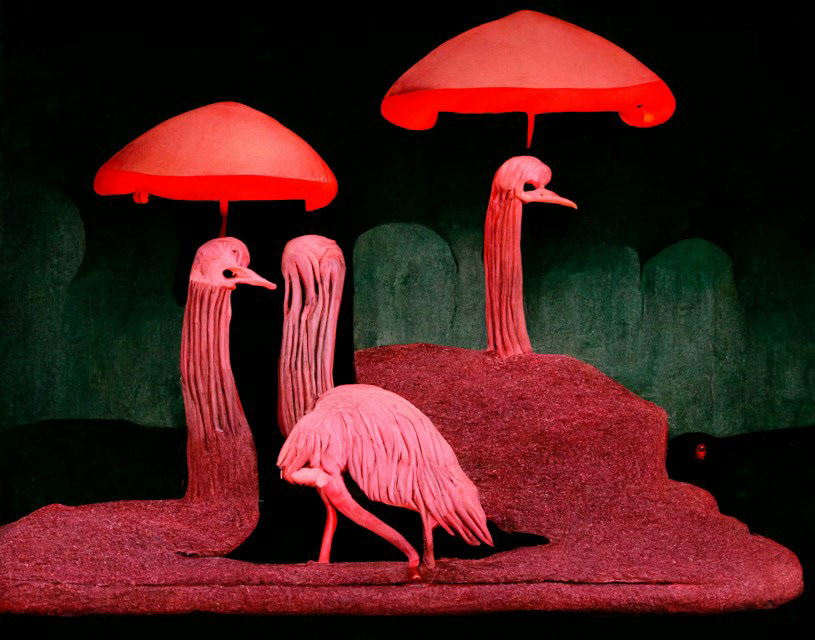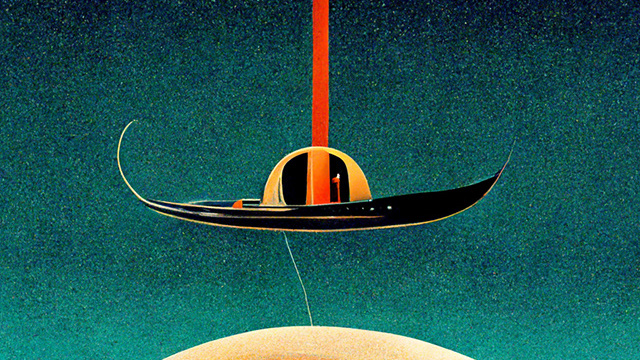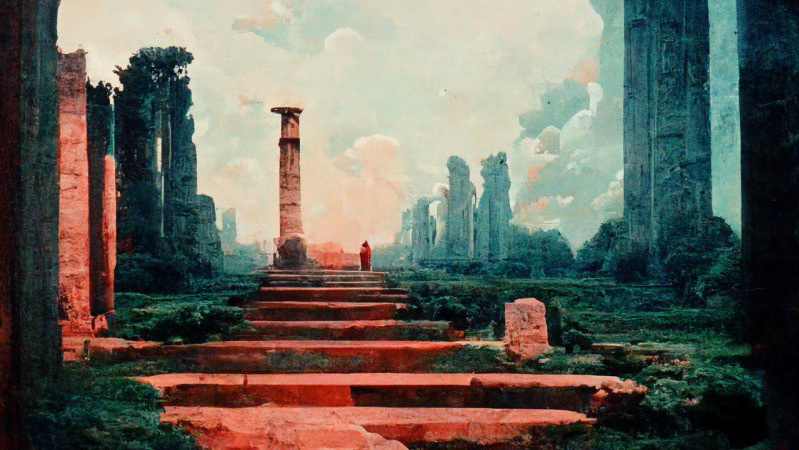Art Deco, Gustav Klimt
Ah, the forest. Trees ... and ... ground ... and creatures. Not knowing where to go with the forest I immediately sought to undermine it. How could I establish a contrast between this perceived dichotomy of humanity and nature? (surely the same, at some point of distinction) ... what came to me first was to try a contrast of the industrial Art Deco with the forest, and Klimt came to mind as a kind of mid-ground in style; to exploit the lavish details to a more natural scene seemed intriguing.
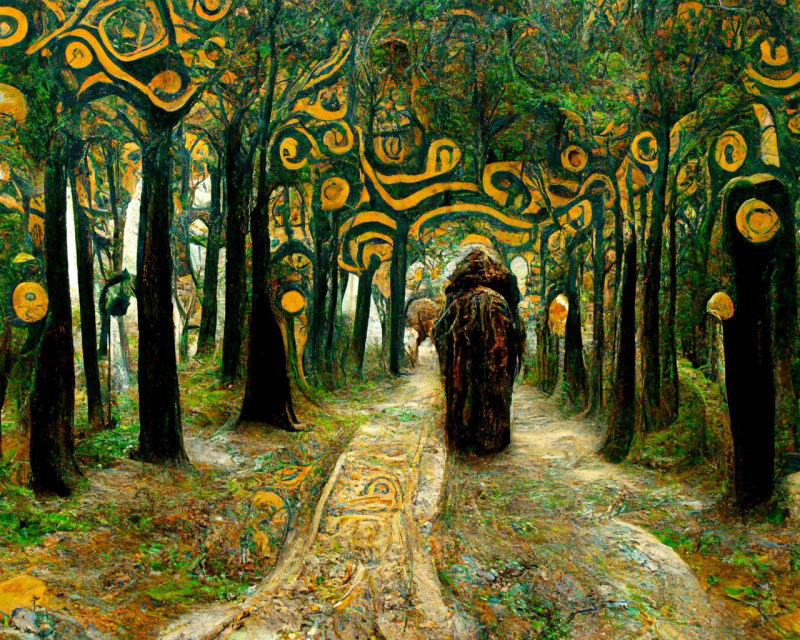
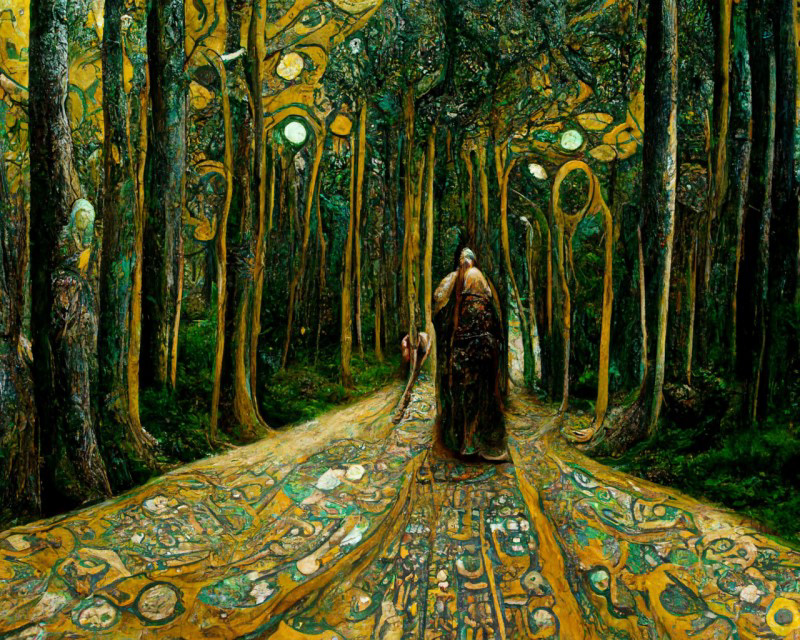


Tower Stumps , Wool Barks
These were very intriguing; the styles spoke to each other. But there was more to contemplate. The urge to represent a natural city hit me, but I wanted to show a kind of common basis between the "natural" and the anthropic, so attempted to make tall buildings severed at their trunks in order to draw attention to the cycle of growth and decay inherent to both worlds. In the few attempts I found little success to get this as I saw it, and to spite the machine I pushed into an easier attempt at a simple style of wool trees for no other reason than to have a success.
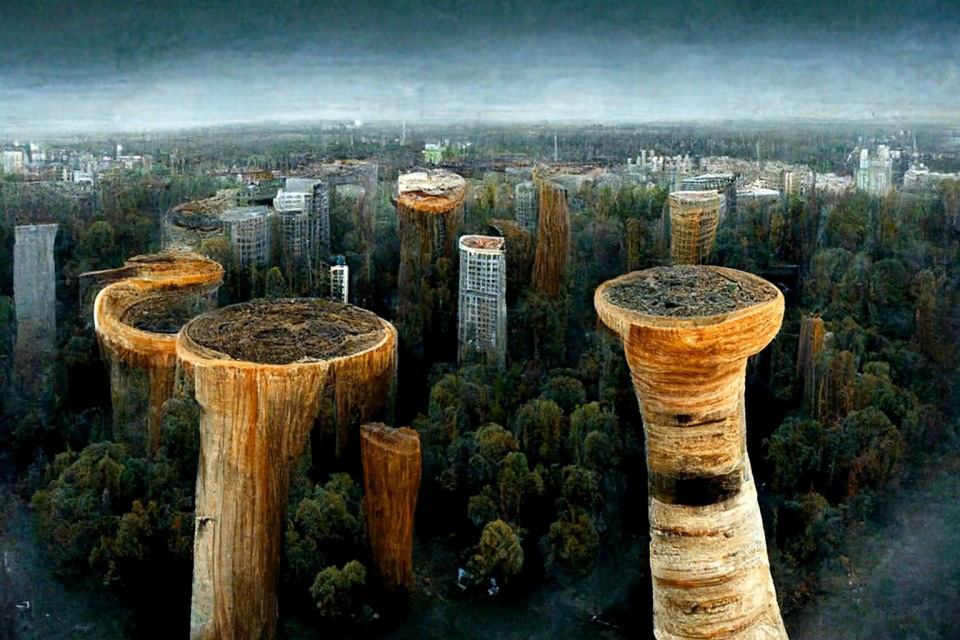
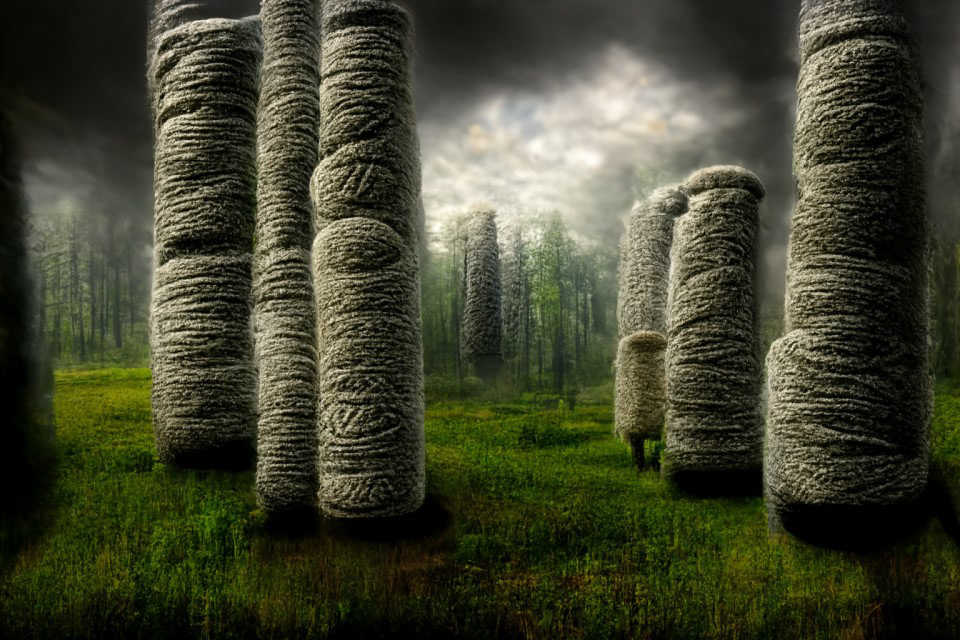
Tom Thomson
I took a moment to consider other styles that would fit a forest, coming back to the work of Tom Thomson (1877-1917). I had seen his 1917 work, "The Jack Pine" sometime in this last year, and had felt so enamored by its depiction that it never seemed to leave me. This seemed a natural extension to a forest scene, so I prompted MidJourney with a flooded forest in Thomson's style, alongside some rendering flags.




Organic Surreal Cubism
These somewhat limited stylistic abstractions were wonderful and a natural mix for the scenery - of course. Maybe too natural a mix, Thomson did paint such subjects after all. Lately I had been trying a much longer thread on the representation of time in these static images, and of course was investigating Cubism. I wanted an abstract style that would contrast the depth and density of a forest, but running purely with cubism would seem limited, so I went with a "surreal cubism" style in order to attempt warping of the boundaries.
It felt necessary to further negotiate the artificiality of the cubist abstraction, so I placed several tone modifiers in suggesting the organic nature of the scene, as if marketing food - such as this scene having no artificial ingredients. The results were hit and miss, but I was appreciative of how the style did manage to meld these two disparate fields, and deep in the revisions I started to find something worthwhile.



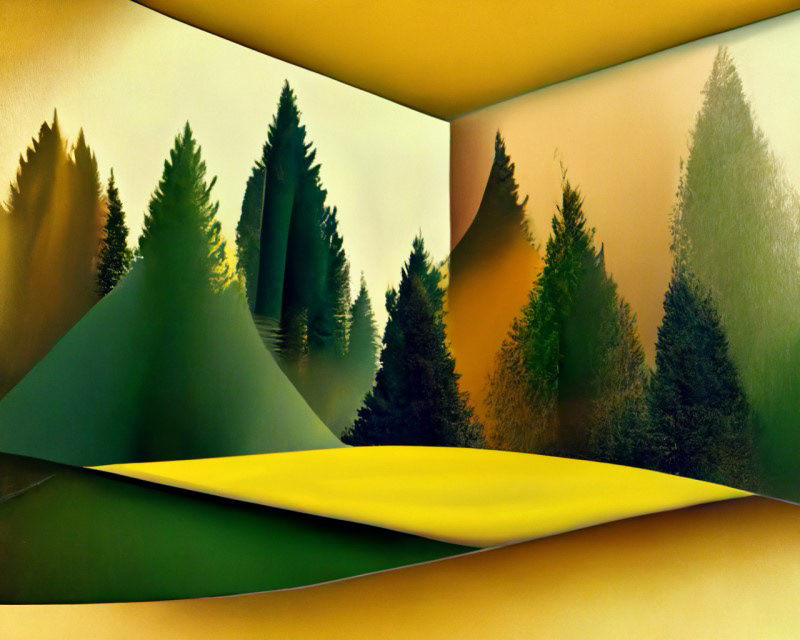
16-bit Playstation
Afterward I sought something more distinct within the abstraction. When I imagine a forest, a part of me goes to the atmospheric 1999 Playstation game, Silent Hill. Likewise there has been a resurgence in the gaming community these last few years of this kind of 16-bit, almost-low-poly aesthetic; but I didn't want a darkness (this is Tall canopy after all). The attempts were middling and I could not get the style I sought with ease (probably a scale issue), but some of the results were still fine, if dull.



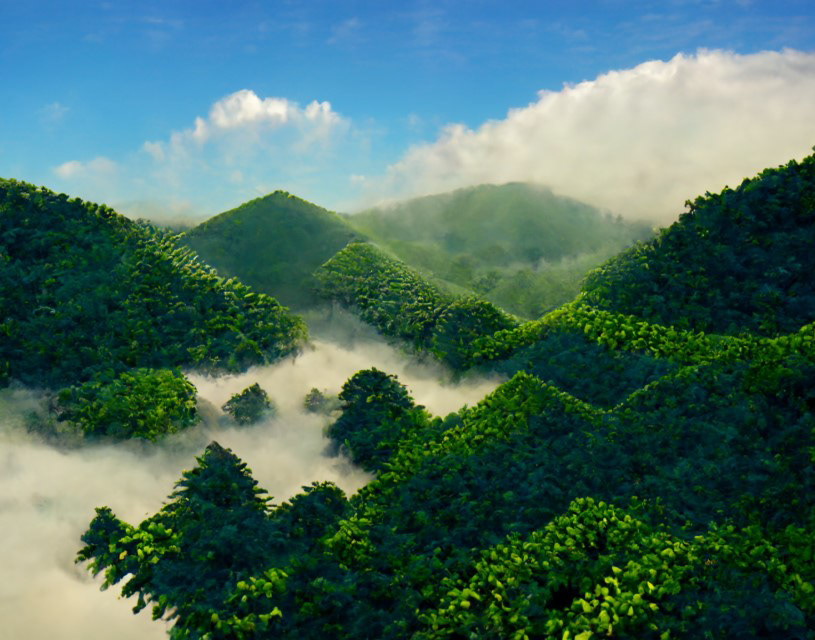
Klimt-Thomson-Cubism
Facing the frustration of the failures of the 16-bit Playstation aesthetic, I cowered and hid in previous successes. But I wanted something new... Klimt style fascinated with details, Thomson with the heavy, plodding portrayals, the "organic cubism" with stark intervening contrasts of the real and the abstracted. It seemed simple then - intertwine them, hope for the best. The prompt text outside of styling for these built on previous successes in use of "radiant tangential expanse," "organic no artificial derivatives," "forest of hope."



Deer Staging
I appreciated the results and played with them further, but I would have to revisit these novel-seeming styles more thoroughly later. It was time now for the forest. I considered material; the forest textures draw out so much detail available, but it is also obscured by the offering of so much detail. I thought of the deer. Recently I had been to Muir Woods in California, and someone pointed out a deer, after a few minutes I failed to see it - but it had been right in front of me, camouflaged in its likeness to the forest.
I simplified the forest by seeking cardboard, but I wanted to keep this nature together; knowing the artificiality of these choices, I decided to stage the scene, literally, to show it as a kind of diorama of humanity's view of the forest, incapable of being summarized with ease because of its faculties yet a cohesive system between flora and fauna, offering a masking likeness for its creatures that participate within it.

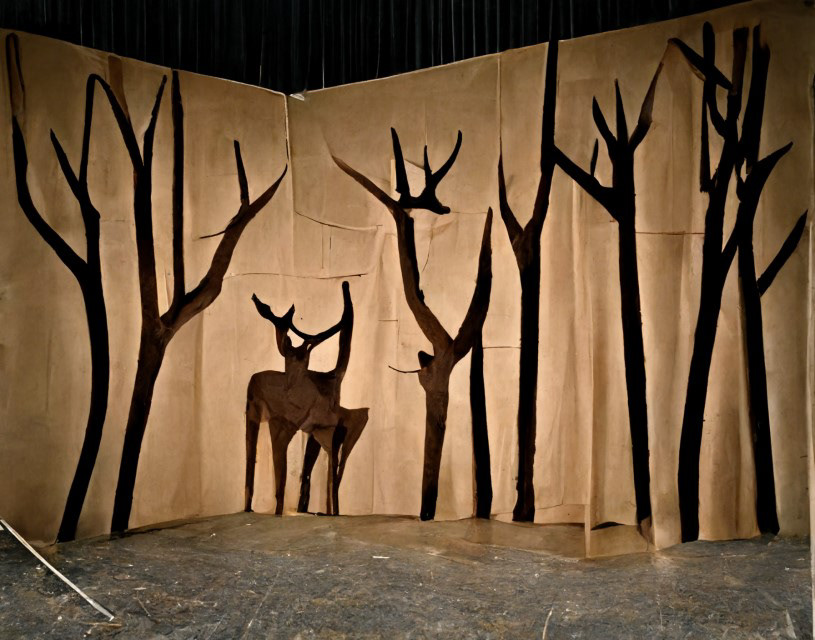
Topical Gorey Brainforest
I was satisfied by now with these explorations. I sat back and watched other prompters and their curious creations. Someone seeking a tropical rainforest sparked in me the urge to defy them with permutative lunacy, and so I delved into the creation of the "topical brainforest." Of course it needed something else, namely sultry high-minded zuglugs (whatever those are) and the tepidness of a flamingo orchard.
Not content to simply receiving this scene, I conspired to stylize it in the darkness of Edward Gorey; to cut the Gorey I set it as an electroluminescent diorama. While the outcome still had a kind of darkness in its confusion, I appreciated it for its lounge-like tones, strange brain-tree-flamingo creatures, and the unprompted green and pink palette; it reminded me of something primordial and distant, yet still yearning to be seen.



